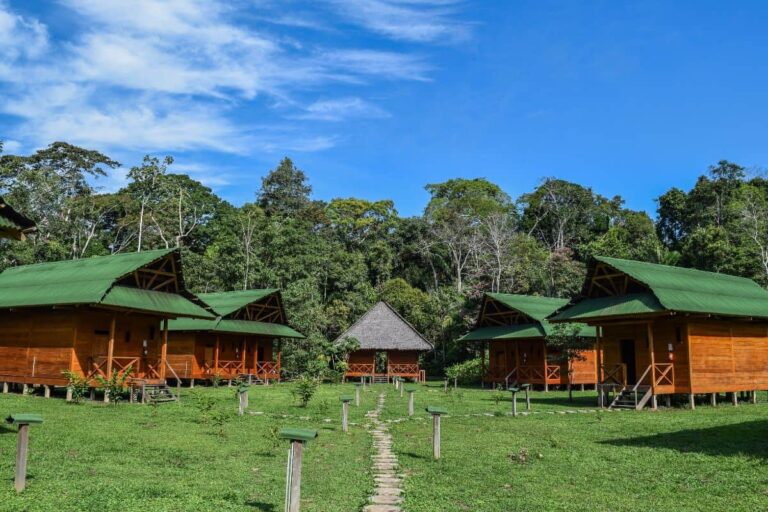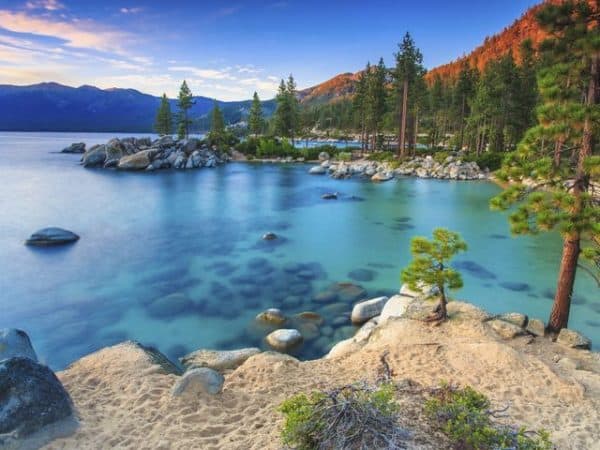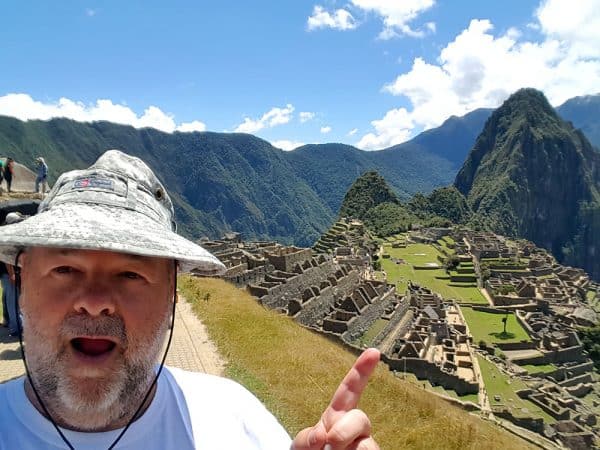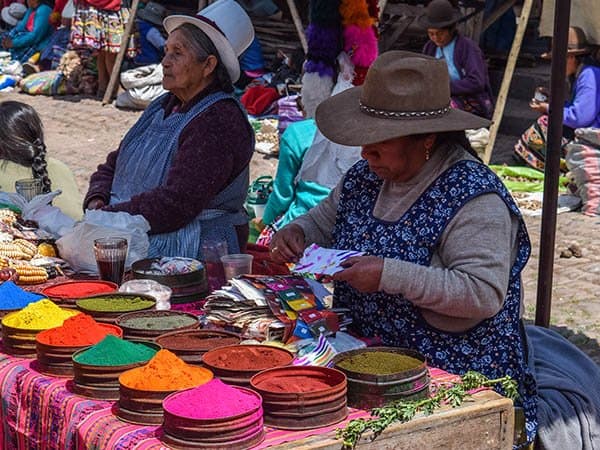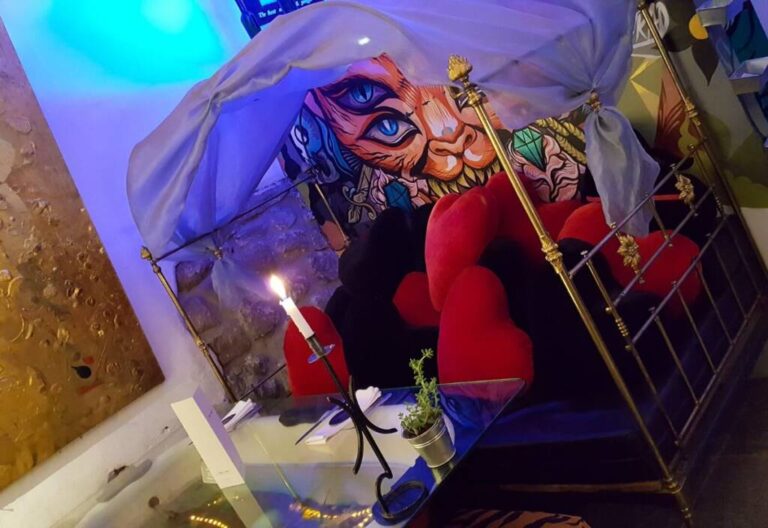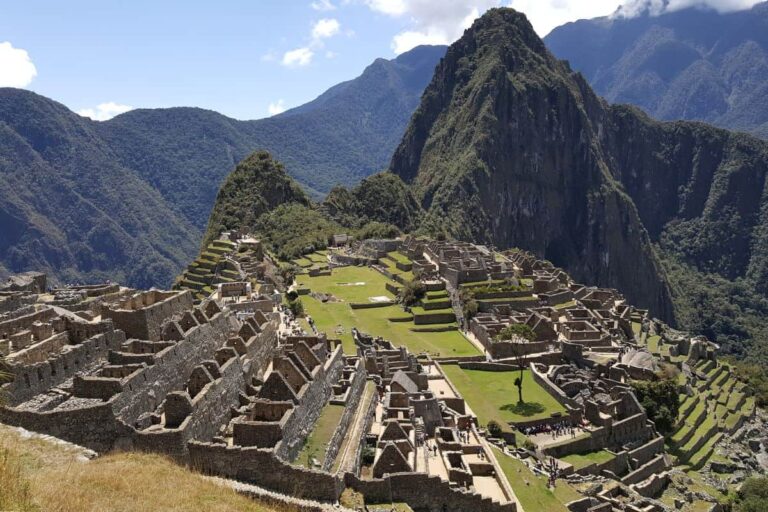The big green bus from Cusco to Puno

If you are a fan of nothing more than ticking the boxes when it comes to visiting the world’s most overexposed tourist hotspots, and monuments per minute are how you decide on the success of a trip, then you will be excited to know you can move from Cusco to Puno in a little under a single airborne hour.
This means you could literally check off Machu Picchu and the floating Uros Islands of Lake Titicaca in a single, manic weekend. For others who love to travel it also means you will have missed so many less prestigious, but equally as culturally significant places along the way.
Get on the bus.
We didn’t really expect to be using “public” transport on our Amazon and Inca Adventure but there we were just after breakfast being shuffled onto an ostentatiously green bus for the ten-hour trundle across Peru. I expected this would feel like an eternity.
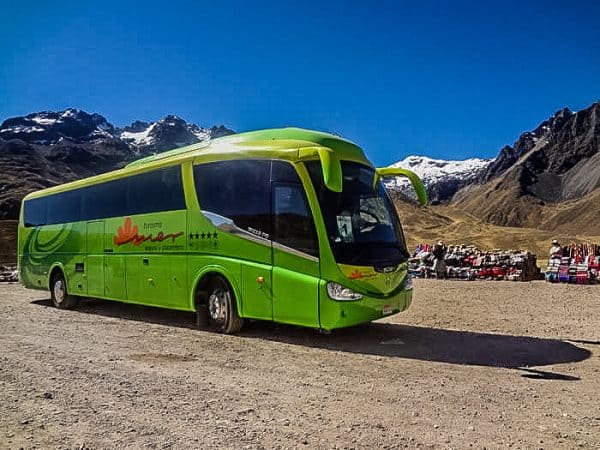
At the unvacationlike hour of 7 am, we pulled out of the bus terminal and waved a weary goodbye to the somehow slow-paced and yet buzzing collection of streets, buildings, and people known as Cusco. It had only been a few days but Cusco felt as comfortable as a heated snuggie and a place to which I have vowed to return.
Once onboard we had quickly become aware that this was no “chicken bus”. Comfortable seats, snacks available, interesting commentary, and the glorious knowledge that we would be stopping a number of times along the way. Not just to give our bodies the chance to try a different position to that available on the bus but to explore and learn about some very significant places in Peru’s history.
Oh, and a buffet lunch to sweeten the deal. Everything you are about to experience this day costs less than 80 USD per person.
Read our in-depth review of the entire Peru tour here.
Stop #1 : The Sistine Chapel of America
What a surprise, we are stopping to see a church. Whether it be Europe or Latin America you will get to the stage where you feel visiting one more church will see you curled up under the altar mumbling “don’t they know how to build anything else?”.
And so in just a blink of an eye (as long as your blinks last for approximately one full hour) we arrive at the quaint but not jaw-dropping Andahuaylillas Church. From the outside it looks like the same stereotypical Spanish-influenced church that seems to pop up in every small town around here.
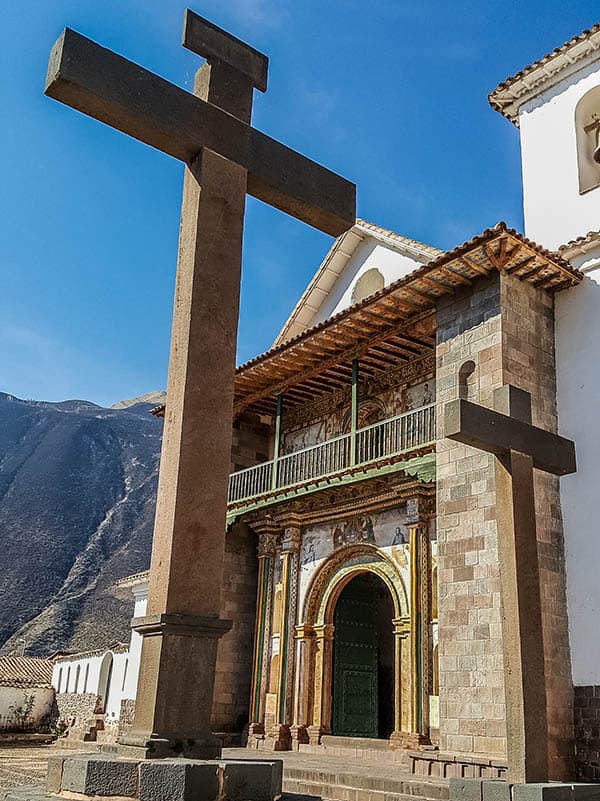
But walk through the door and you will find something that sets this Church apart from its many external lookalikes. The interior is a spectacular work of art, an incredible mix of the traditional Incan religious beliefs and the newly arrived Catholicism being force-fed to the locals.
I have to give props to whichever Spanish leader came up with this plan as it is quite genius. The invaders were having mixed results in trying to convert the locals to believe in their one “true” God, and killing all those who held out was starting to seem a little short-sighted. The answer was to “bend” the Catholic beliefs a little for future gain and to show how God was also the boss of the Incan Gods.
The frescoes in this church incorporate a number of the Incan beliefs into more traditional Catholic-inspired Bible stories. Links to Pacha Mama, the Incan version of Mother Earth, and the sun god Inti take important, but obviously secondary roles, in many of the paintings.
The idea was that God would be easier for the locals to accept if the two religions could be shown working together. It was a success and certainly made it much easier over time for the Spanish to convince the locals that one god was easier to manage than many.

As well as artwork as captivating as anything in Europe there is also a staggering amount of gold in this place which also sets it apart from most other local churches around the Americas.
Another pleasant surprise was that the bus trip also includes a knowledgeable guide to give you the low down on the places we visit for the day. Informative and hard to believe what great value this trip is becoming.
Souvenir shop perused, eyes well and truly filled with stunning visions, photos snapped, that must mean it’s time to hit the road again. Not a bad first place to break up the trip and already more fun than flying.
Stop #2 : The archaeological site of Raqchi
OK, so one and a half blinks of an eye on the bus this time, or 90 minutes for those of us with more average eye control, and the next stop is a little-known but hugely significant site for the Inca.
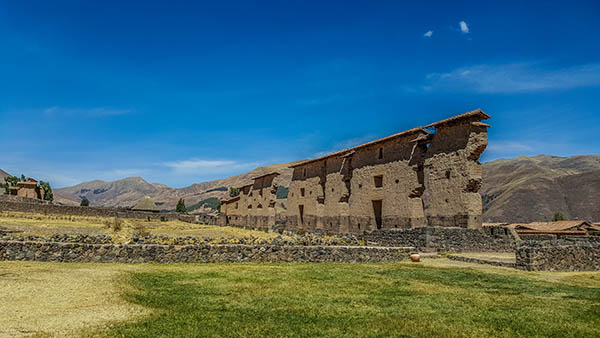
The Temple of Wiracocha stands tall on this impressive site. Considered by many to be one of the most important trading hubs of the Inca empire, Raqchi ruins not only contain the remains of the Temple but also a dozen attached residential buildings and about 150 storehouses. One could say it was the Singapore of pre-Hispanic South America.
Traders from across the continent would converge here to buy, sell and swap. Grains, trinkets, and tools could all be found here. To see the storehouses stretching out in the distance again makes you wonder how this empire may have developed if not for those pesky and murderous Spanish.
Speaking of murderous Spanish, we have them to thank for the destruction of much of this important site. The Temple must have been quite a sight in its day, almost 100 metres long and 25 metres wide it was the largest single-roofed building in the empire. It also featured a zigzagging corridor inside which represented the relationship between Wiracocha and the Incan cosmos.
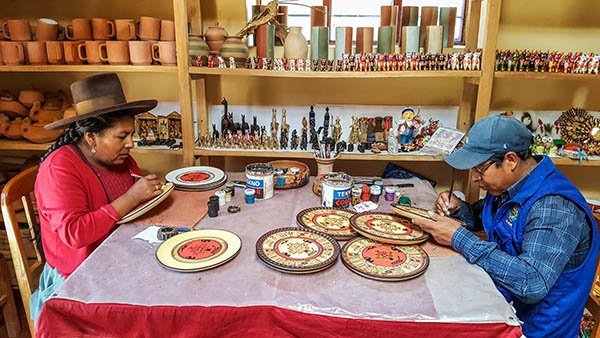
So, the Spanish laid waste to this massively significant historical site but at least they left a new church in its place. As we know, they did know how to build churches that look exactly the same and were hardly ever used!
After getting your fill of the reminders of mindless destruction you can visit some local craftsmen, descendants of the original inhabitants, creating wonderful products as they have for generations.
We visited a husband and wife painstakingly painting some beautiful ceramics and couldn’t stop ourselves from splashing a tiny amount of cash on some adorable little Toritos, ceramic baby bulls that look way more expensive than they were.
Stop #3 : Are we there yet? I’m hungry!
Now that our spiritual and historical hunger had been sated our actual bodily hunger decided to force itself upon us. Back on the bus and after a mere 180 degrees of movement from the clock’s big hand we were shuffled off and herded into a decent little restaurant called La Pascana.
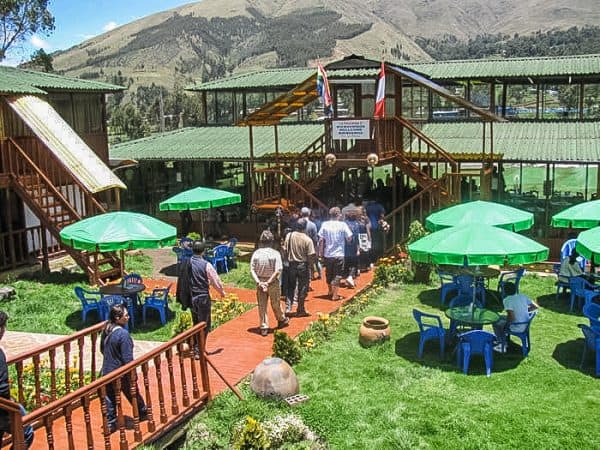
While the Michelin star wielding food critics are unlikely to be excited by the buffet on offer it is more than adequate, clean, and best of all included in the price of a bus ticket. Grab an included dessert and water or soft drink and if you still feel like complaining then you will find the llama in the yard next door will be the only one that might listen, but probably not.
Bellies full of better than questionable food it was a case of “everybody out of the pool” as the next busload of hungry travellers lined up outside the door. Now it was time to get high.
Stop #4 : This place will take your breath away
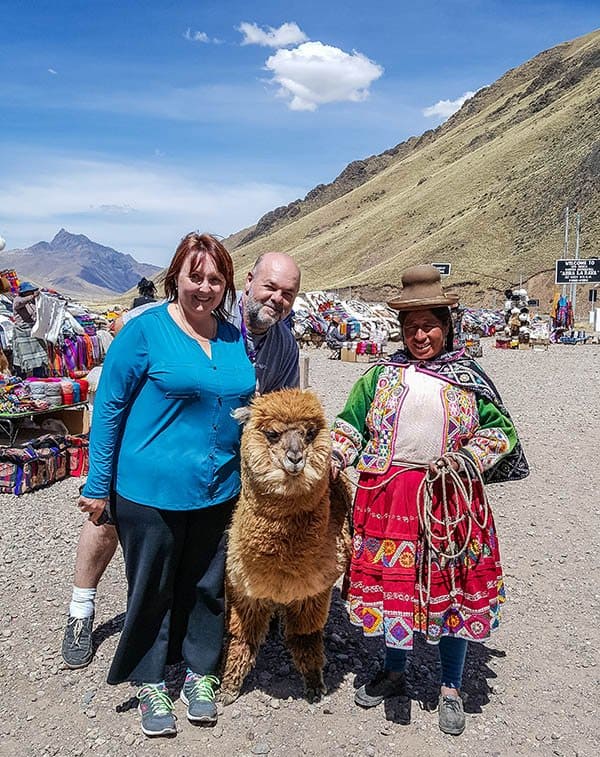
Seriously… the next stop is the highest point on this trip, the air is thinner than a supermodel and breathing is a challenge. On the bright side, the views are quite spectacular and it’s a great place for a llama selfie or to buy a warm hat from the small group of locals who have created a mini tourist market.
Why a warm hat? Well, it’s pretty cold at 4350 metres above the ocean and those funky Peruvian beanies are awkwardly cool, in my awkwardly cool opinion.
Not only is the La Raya Pass a stunning piece of countryside, a wide open plain in the style of the old Hollywood Westerns, flocks of llamas grazing which is much less than in the style of old Hollywood Westerns but doubly amazing in that it is on the top of an enormously substantial mountain range.
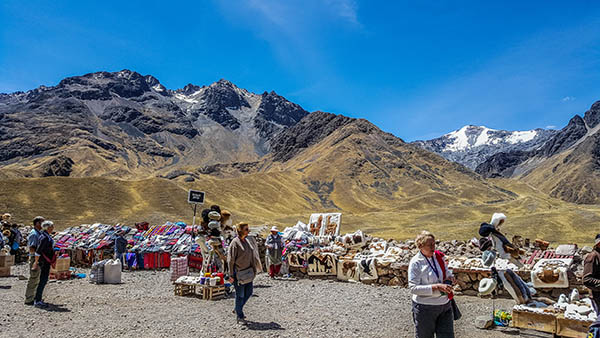
Oh, and if that’s not enough to make you start Googling images and telling yourself it is a place you need to see for yourself, it has the widely accepted title of being the starting point of the mighty Amazon River. The distant Chimboya Glacier is where it all begins.
Stop #5 : What a load of bull
Almost at the end of our ride from Cusco to Puno now, where we get to have one of the highlight activities of my life, to experience the strange and awesome floating Uros Islands of Lake Titicaca. But there is one stop left and it is another interesting side note to this long and interesting day.
The little town of Pukará was the home of a major pre-Hispanic civilisation that ruled the roost in these parts for around 2000 years from 1600 BC, give or take a year or two. There is a museum here that hosts a pretty impressive collection of artifacts including a largish statue of Hatunñaqac, which roughly translates to the executioner.
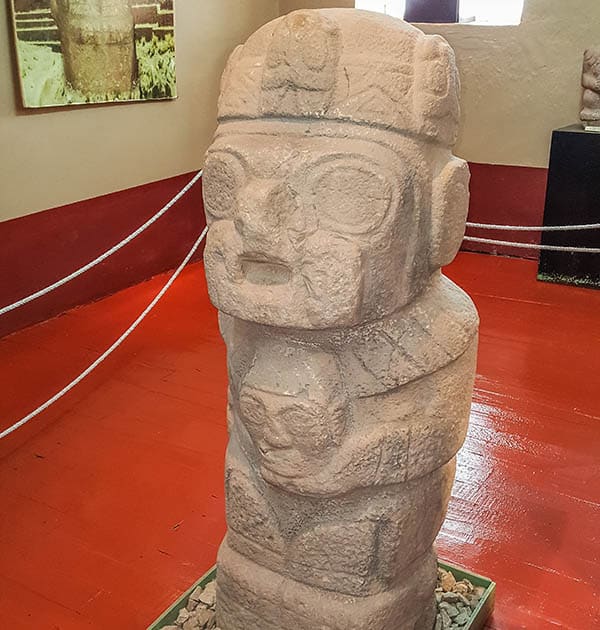
So after seeing this nasty dude holding a severed head it should come as little surprise that the description appears quite accurate.
The other fun fact about Pukará is they seem to love their bulls, especially the little ones known as Toritos. I did ask our native Peruvian guide at this stage what I considered a reasonable question.
If toritos are little toros, are Doritos little Doros? And if so what is a Doro? A giant corn chip maybe!
She considered this for a moment before turning away. I am not sure if she did not know the answer and was embarrassed or she thought me an idiot undeserving of her time. To this day I am sure it is the former.
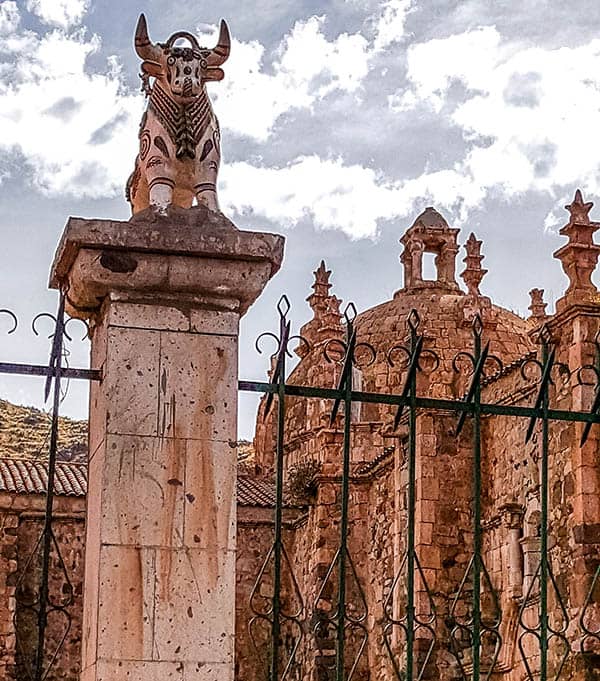
In truth, these little bulls seem to adorn almost every roof in the town and symbolise good luck. The locals associate the bulls with the growth of their small community since cattle were introduced by the Spanish.
They are the major tourist trinket in the surrounding areas with almost every craftsman fashioning their own versions of these little guys. I bought a cute little pair, they are pretty cool souvenirs and I helped support the community, sounds like a win-win to me.
Final stop : Try to say it without giggling
And no I’m not talking about Puno but rather the lake upon which it hugs. Lake Titicaca, which our local guide advised us is made up of two words of the local Quechuan language, titi which means Puma, and caca which means mount. It is a reminder to them of the felines that roamed the area in the past.
He also advised us the correct pronunciation pushes the two c’s deeper from the throat rather than the usual k sound in English. In other words, he said, Titicaca is mount puma while “titikaka” (how gringos say it) means puma pooh!
The lake is pretty spectacular and it is hard to believe a body of water this big is present this high above sea level, but that’s another story for another day.
[pinterest-gallery message=”It may take 10 hours to get from Cusco to Puno on the big green bus of Turismo Mer but is it worth doing or just a waste of a day? ” columns=”3″ images=”4387,6303,6304″ spacing=”5″]
Now I need a good lie down
While there is no doubt this day is very long the time simply slipped away. There is a perfect mix of travel and stops with more than enough to do at those stops to keep your mind of the driving part.
Well congratulations Mr and Mrs box-ticker, for getting here hours before us on your flight and beating us to see the floating islands, now you can move on to glimpse the next thing on your list.
Meanwhile, by taking this bus from Cusco to Puno, I have learned more about the impressive people of old Peru, learned to hate the Conquistadors even more, and have two little bulls as reminders. Not to mention that I did it at a much more economical price.
I think I will continue doing things the slow way. You might see more major sites if you rush, but I get more experiences. So, in my mind, I win!
We would love to hear your thoughts if you have done this trip or tell us about a time you took the slow way and had a great surprise.
